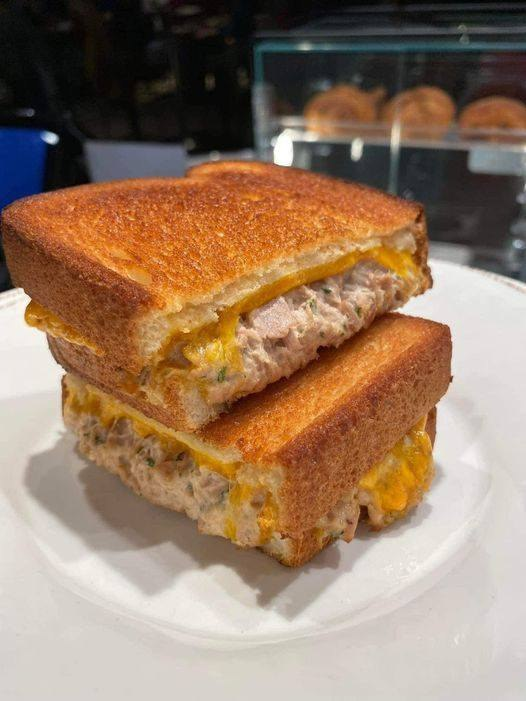Ingredients:
- 2 cans (5 oz each) water-packed tuna, drained
- 1/4 cup light mayonnaise
- 1 tablespoon Dijon mustard
- 2 tablespoons chopped red onion
- 2 tablespoons chopped celery
- Salt and pepper, to taste
- 4 slices whole grain bread (adjust based on your point allocation)
- 4 slices reduced-fat cheddar cheese
- Cooking spray
Instructions:
- Preheat Oven:
- Preheat your oven’s broiler.
- Prepare Tuna Salad:
- In a bowl, mix together the drained tuna, light mayonnaise, Dijon mustard, chopped red onion, and chopped celery. Season with salt and pepper to taste.
- Assemble Sandwiches:
- Place the slices of whole grain bread on a baking sheet. Divide the tuna salad evenly among the slices.
- Add Cheese:
- Top each tuna salad-covered bread slice with a slice of reduced-fat cheddar cheese.
- Broil:
- Place the baking sheet under the broiler for 2-3 minutes, or until the cheese is melted and bubbly. Keep a close eye to prevent burning.
- Serve:
- Remove the Tuna Melts from the oven and let them cool for a minute. Serve hot.
- Optional: Greens on the Side:
- Pair your Tuna Melt with a side salad or steamed veggies for a balanced meal.
Here are some tips that might help you on your weight loss journey with WW:
Understand the Points System:
Familiarize yourself with how WW assigns points to different foods. Foods that are higher in calories and lower in nutritional value will generally have higher points.
Meal Planning:
Plan your meals ahead of time to ensure you have a balance of protein, healthy fats, and carbohydrates.
Prepare healthy snacks to have on hand when hunger strikes.
Portion Control:
Pay attention to portion sizes. Even healthy foods can contribute to weight gain if you eat too much of them.
Stay Hydrated:
Drink plenty of water throughout the day. Sometimes our bodies can mistake thirst for hunger.
Include Lean Proteins:
Protein-rich foods can help you feel full and satisfied. Include sources like lean meats, fish, eggs, and plant-based proteins in your meals.
Load Up on Veggies:
Vegetables are low in points and high in nutrients. Incorporate a variety of colorful vegetables into your meals.
Choose Whole Foods:
Opt for whole, minimally processed foods. They often have fewer points and are more nutrient-dense.
Limit Added Sugars:
Foods high in added sugars can have higher point values. Be mindful of sweets and opt for natural sources of sweetness when possible.
Smart Snacking:
Choose smart snacks that are satisfying but won’t use up too many points. Examples include Greek yogurt, fresh fruit, or a small handful of nuts.
Track Your Points:
Consistently track your food intake using the WW app or a journal. This can help you stay accountable and make adjustments as needed.
Incorporate Physical Activity:
Exercise can earn you additional points, and it’s essential for overall health. Find activities you enjoy to make it a sustainable part of your routine.
Be Mindful of Zero-Point Foods:
While many fruits and vegetables are zero points, be mindful not to overeat them. Listen to your body’s hunger and fullness cues.
